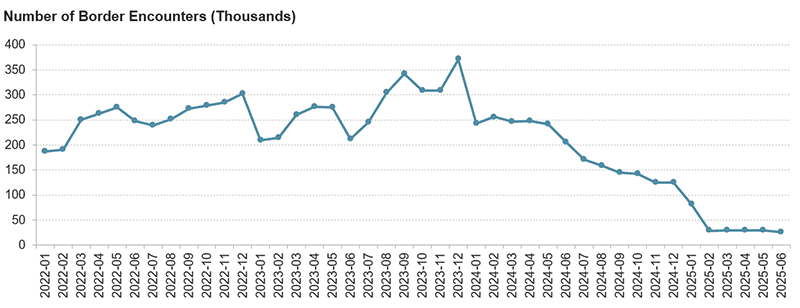Population growth in many metropolitan areas is in doubt given the recent steep drop in immigration, which could undercut household growth and housing demand. This is especially true for large metro areas and those outside of the Sunbelt, which have been dependent on immigration in recent years. With lower levels of immigration, metro areas will need to rely on natural growth (births minus deaths), which has been declining, and domestic migration, which is unevenly distributed, for population growth. As such, many metros will face stagnating population growth or even loss in the near future.
The surge in immigration in 2022–2024 drove population growth nationally before immigration levels dropped precipitously this year, according to our recent State of the Nation’s Housing report. Border encounters have fallen from a monthly average of 240,000 during the surge to a monthly average of 37,000 in the first six months of 2025 (Figure 1). This drop in border encounters implies a much lower level of immigration than in recent years. In 2023, for example, there were 560,000 new arrivals who were lawful permanent residents but this group represented just a quarter of the 2.3 million net arrivals that year, according to the Population Estimates Program.
Source: Metro Area Growth at Risk from Recent Drop in Immigration | Joint Center for Housing Studies







